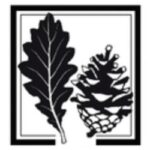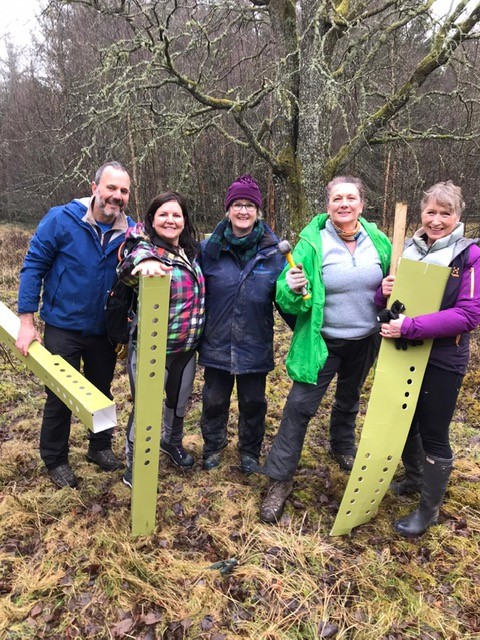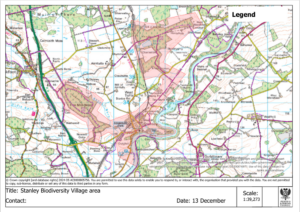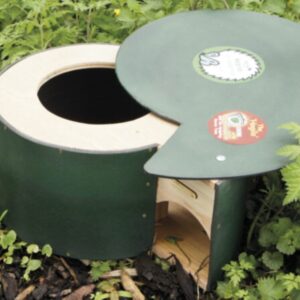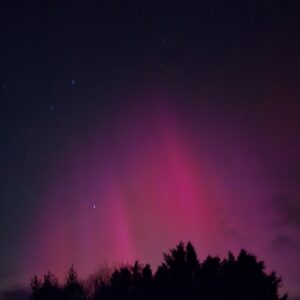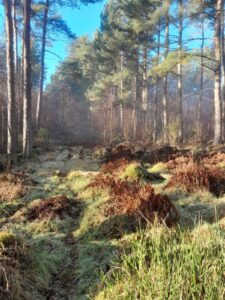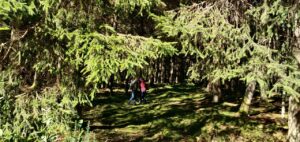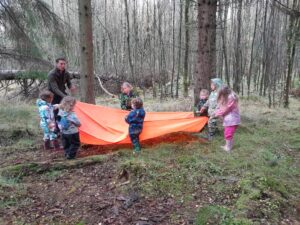What has WSWG been doing this month?
It was tricky to find the tiny, heavily nibbled broadleaf saplings at this time of year, but we tubed about 60 oak and willow plus a few Scots pine, so that is a good start to our ongoing efforts to protect the natural regeneration that is trying to come through in the woods. We used plastic-free, biodegradable tubes made of specially coated cardboard to keep our carbon footprint low and avoid plastic pollution in our environment. It will be interesting to see how they stand up to our Scottish weather and the deer themselves, so we will report back on that later in the season. At least they were all still there, upright and intact a week later! We plan to do more tubing once leaf burst is underway, which will make the little trees much easier to locate and identify, so will let you know when we arrange future sessions if you’d like to help out. Thank you to everyone who came along this month, and to the very kind bakers of the delicious cakes we enjoyed at our coffee breaks!
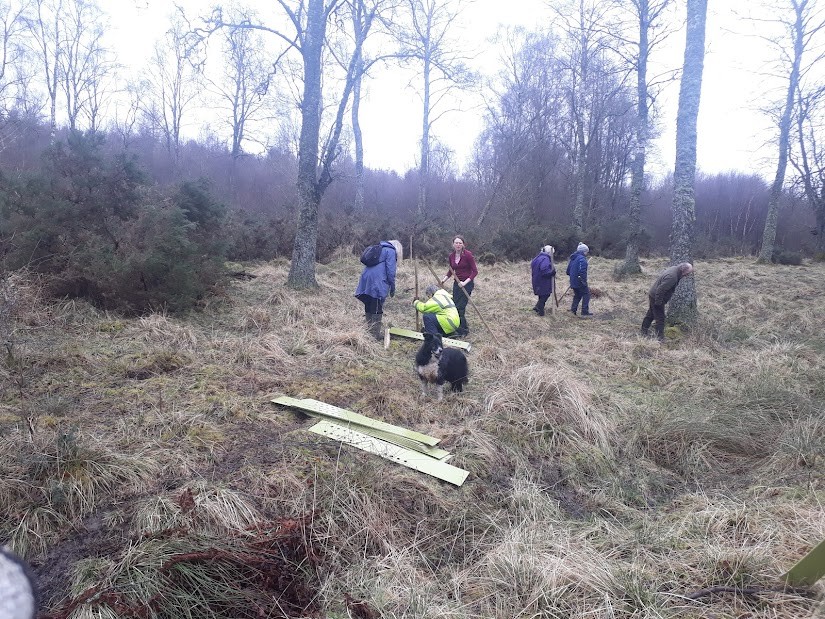
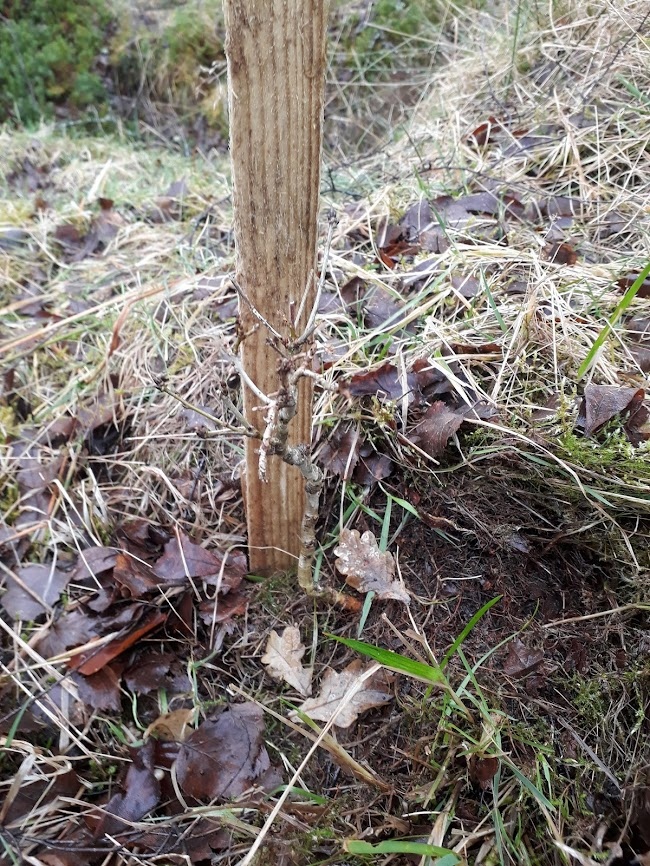
Alan has also been hard at work distributing free Ovo trees to groups and individuals who requested them. Thank you to everyone who participated in this excellent scheme too.
The Shadow Board members have now all joined the Steering Group, currently 11 strong. WSWG has also lodged its application with OSCR, the Scottish Charity Regulator, to become a Scottish Charitable Incorporated Organisation (SCIO) which will be governed by a Board of Trustees.
The Steering Group continues to work hard to complete the costed final WSWG Proposal and Business Plan and the WSWG Community Events Programme for 2022, including the Community Consultation on our final CATS Proposal.
On 8 March, we had another very useful meeting with Forestry and Land Scotland (FLS) to review progress towards our CATS Application due for submission in late May.
Litter-picking (again) at Taymount Wood car park. Needing to do the same at Five Mile Wood car park! Thankfully, there is rarely much litter in the woods themselves, just sadly at the main car park entrances. Hopefully this is a problem we can really address once the woods are in community ownership.
Bird nesting season is upon us, so it is looking like FLS might not get the gorse and other encroaching vegetation in the woods machine-cleared this winter as hoped. If not, we will see if some light manual clearing can be done at some point in the worst areas, then aim for the full works later in the year. Storm Arwen damage to FLS forests elsewhere in the region put routine works well behind schedule.
On 8 March, we also attended a meeting of Perthshire Nature Connections Partnership as part of their wider partnership network working together to make nature recovery happen at landscape-scale in our area. Perthshire Nature Connections Partnership | Perth and Kinross Countryside Trust (pkct.org)
We’ve recently discovered Paths for All “Voices of the Walk” podcasts. To hear about the multiple benefits of walking for “Everyone, Everywhere, Every Day”, tune in to these inspiring talks: www.pathsforall.org.uk/podcasts
Word of the Month
Catkins. We see catkins on many different species of tree in winter and spring, such as alder, hazel, birch and oak which are monoecious (male and female flowers on the same tree) and willow which are dioecious (male and female flowers on different trees). On hazel and oak, only the male flowers form catkins, droops comprising sometimes hundreds of individual flowers, with the female flowers clustering as single buds (eg hazel) or cones (eg alder). On other species such as poplar and aspen, both male and female flowers are borne in catkins. Most species are wind-pollinated; willow are insect-pollinated. If female hazel flowers are pollinated successfully, this is what produces hazel nuts in the autumn. Different trees have different mechanisms to avoid self-fertilisation. With hazel, the male flowers release their pollen days before the female flowers on the same tree are ready to be pollinated. So clever.
What’s coming up next?
WSWG Community Events Programme to be publicised soon. Walks, talks, foraging, fun events, community consultation on final CATS Proposal, more tree tubing. Something for everyone!
There is a new Community page on the WSWG website which we would like you to help us fill up with imaginative and uplifting expressions of support for the WSWG Project over the next few months. Community – West Stormont Woodland Group We’d love contributions for any of the headings we’ve set up at any point. However, at this time of year, with birdsong and other spring sounds filling the air again, we would particularly love it if you send in sound clips of different things you hear when you are in the woods which we can put in the Songs and Sounds section. Maybe a chiffchaff chiffchaffing or a woodpecker hammering or a buzzard mewing. Or a bumblebee buzzing by. Or the breeze rustling through the trees. Or a horse’s hooves on the track. Or your children playing. Or yourself singing or talking about what you are seeing as you walk or sit in the woods! Just something to highlight the pleasure we get from our woods and to share it with people who maybe don’t get in to the woods so often or at all. We are really looking forward to hearing what you hear. Please use the Contribution box at the bottom of the Community page to send in whatever you want to share. You can do this anonymously or be credited on the WSWG Community webpage. Thank you in anticipation.
